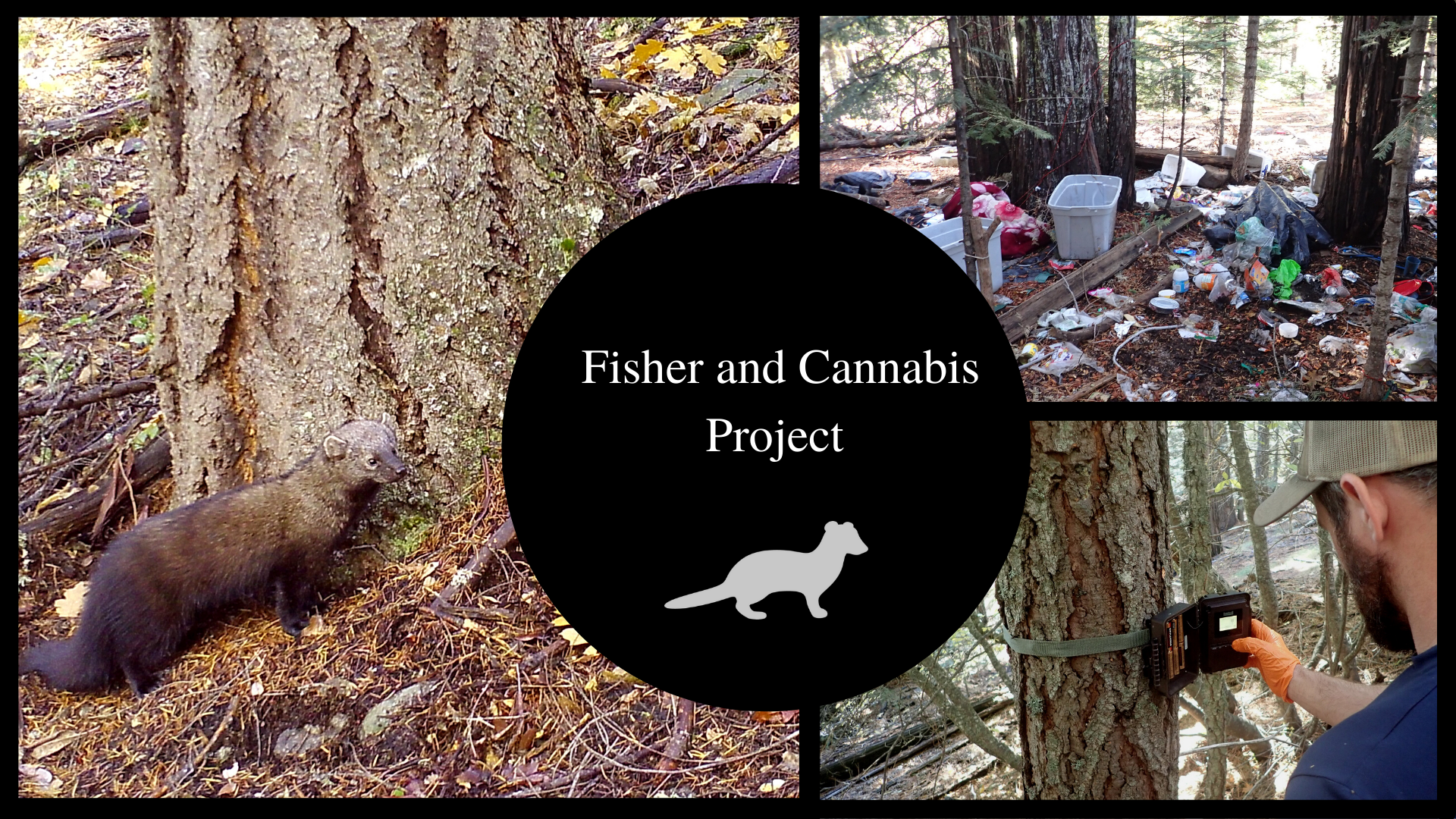
Growers who establish illegal cannabis cultivation sites on public land often live on-site throughout the summer, bringing in thousands of pounds of food and generating hundreds of pounds of refuse throughout the growing season. Because wildlife can damage cannabis plants, cultivators often use a variety of pesticides, including anticoagulant rodenticides, in order to protect their cannabis crop and personal food items. When cannabis cultivation sites are eradicated, the food and refuse left behind by growers becomes completely unprotected, further attracting wildlife to these areas and increasing the risk of exposure to pesticides that persist on the landscape. Previous research has found that over 75% of fisher carcasses throughout California tested positive for one or more rodenticides (Gabriel 2012, Gabriel 2015), and this exposure to pesticides was cited in the 2020 listing decision of the US Fish and Wildlife Service as a critical threat to fishers, warranting the Southern Sierra Nevada population segment to be listed as endangered. Because the threats of these pesticides are not fully understood, research aimed at better understanding the risks that illegal cannabis cultivation sites pose to fishers is needed.
Objective: IERC scientists are placing GPS collars on fishers found to be visiting cannabis cultivation sites throughout Northern California and in the endangered Southern Sierra Nevada population segment. Our goal is to elucidate potential sublethal effects of trespass cannabis cultivation on fishers by examining reproduction, space use, activity, and behavior of animals using grow-impacted areas versus habitat less impacted by cannabis cultivation. Further, we plan to examine behavior and space use before and after reclamation of grow sites to better understand if and how reclamation improves conditions for fishers and assists in a return to typical fisher activity patterns. This project is supported by grants and agreements with United States Fish and Wildlife Service, California Department of Fish and Wildlife, the Hoopa Tribe’s Forestry Department, and the United States Forest Service Law Enforcement and Investigations.
